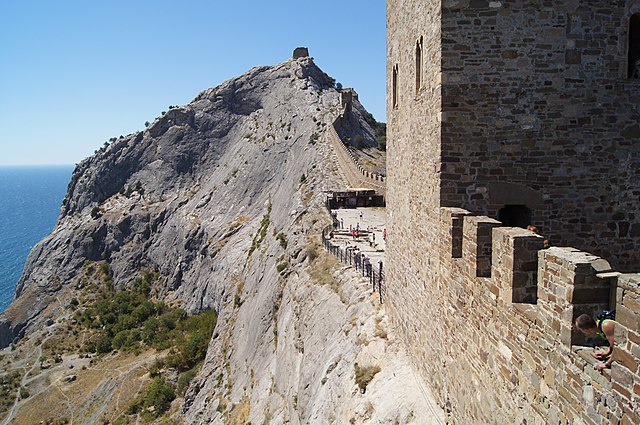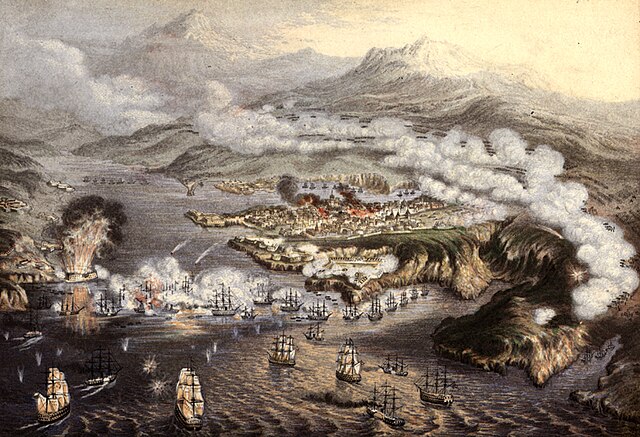Pantikapaion was an ancient Greek city on the eastern shore of Crimea, which the Greeks called Taurica. The city lay on the western side of the Cimmerian Bosporus, and was founded by Milesians in the late 7th or early 6th century BC, on a hill later named Mount Mithridat. Its ruins now lie in the modern city of Kerch.
The prytaneion of Pantikapaion, second century BC. Kerch's Obelisk of Glory is visible in the background.
A coin from Pantikapaion, bearing a star inside a diadem and the letters "ΠΑΝ" (Pan), 2nd century BC.
Representations of Pan on 4th century BC gold and silver Pantikapaion coins
Small statue of Scythians with bows from Panticapeum, 4th century BC
Crimea is a peninsula in Eastern Europe, on the northern coast of the Black Sea, almost entirely surrounded by the Black Sea and the smaller Sea of Azov. The Isthmus of Perekop connects the peninsula to Kherson Oblast in mainland Ukraine. To the east, the Crimean Bridge, constructed in 2018, spans the Strait of Kerch, linking the peninsula with Krasnodar Krai in Russia. The Arabat Spit, located to the northeast, is a narrow strip of land that separates the Syvash lagoons from the Sea of Azov. Across the Black Sea to the west lies Romania and to the south is Turkey. The largest city is Sevastopol. The region has a population of 2.4 million, and has been under Russian occupation since 2014.
May 2015 satellite image of the Crimean Peninsula
Ruins of the ancient Greek colony of Chersonesus
Genoese fortress in Sudak, 13th century, Republic of Genoa, originally a fortified Byzantine town, seventh century
The 11-month siege of Sevastopol during the Crimean War








